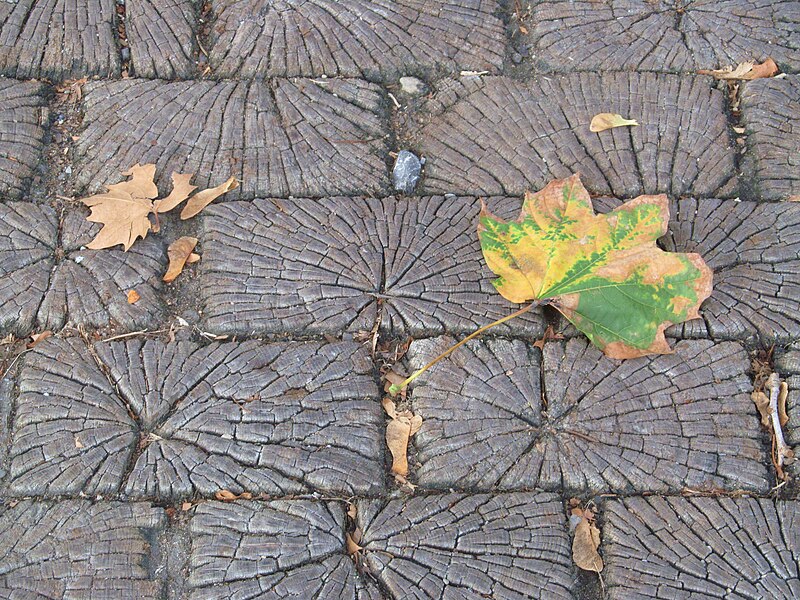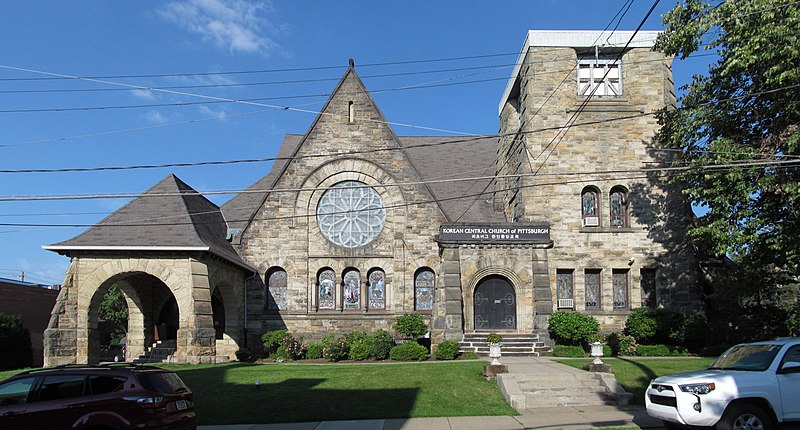
Pittsburghers are used to bricks and Belgian blocks, and most people who walk on Ellsworth Avenue past the entrance to this absurdly narrow little street probably never notice that these blocks are made of wood.

Wood-block pavements were very common in the 1800s. The “Nicolson pavement”—a pavement of wood blocks soaked in creosote—had some advantages over stone: cobblestones were horribly uneven, and Belgian block is expensive and hard on horses’ feet. Wooden pavement does not stand up well to heavy vehicular traffic, however, and almost all the Nicolson pavements are gone. There is one in Philadelphia, one in Cleveland, a badly decayed one in St. Louis, and three in Chicago, according to the Wikipedia article. But Roslyn Place is the only remaining street in America paved from beginning to end with wood blocks—although, to be fair, the beginning and the end are not very far apart. Here, in a quiet dead-end court, the traffic is light, and the blocks last for decades before they have to be replaced. Since the street is a historic district, we can be fairly confident that they will always be replaced with wooden blocks, as they have been in the past.



























